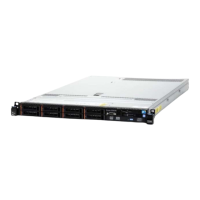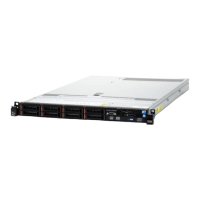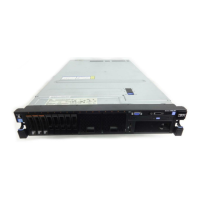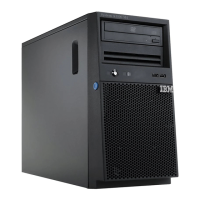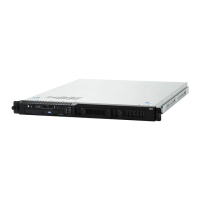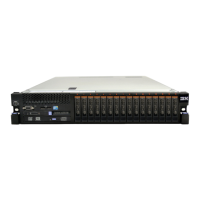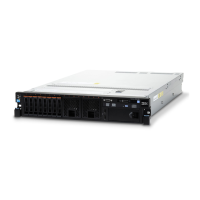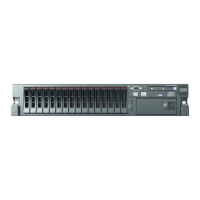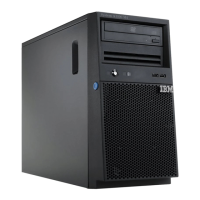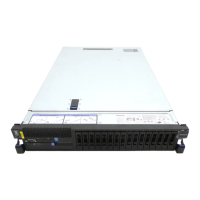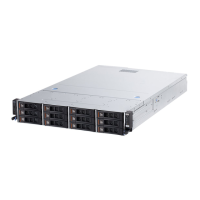v Follow the suggested actions in the order in which they are listed in the Action column until the problem is
solved.
v See Chapter 5, “Parts listing, IBM System x3530 M4 Type 7160,” on page 265 to check if a component is a
consumable, structural, or FRU part.
v If an action step is preceded by “(Trained technician only),” that step must be performed only by a trained
technician.
Symptom Action
The server does not turn off.
1. Determine whether you are using an Advanced Configuration and Power
Interface (ACPI) or a non-ACPI operating system. If you are using a non-ACPI
operating system, complete the following steps:
a. Press Ctrl+Alt+Delete.
b. Turn off the server by pressing the power-control button and hold it down
for 5 seconds.
c. Restart the server.
d. If the server fails POST and the power-control button does not work,
disconnect the ac power cord for 20 seconds; then, reconnect the ac power
cord and restart the server.
2. If the problem remains or if you are using an ACPI-aware operating system,
suspect the system board.
The server unexpectedly shuts
down, and the LEDs on the
operator information panel are
not lit.
See “Solving undetermined problems” on page 259.
Serial-device problems
v Follow the suggested actions in the order in which they are listed in the Action column until the problem is
solved.
v See Chapter 5, “Parts listing, IBM System x3530 M4 Type 7160,” on page 265 to check if a component is a
consumable, structural, or FRU part.
v If an action step is preceded by “(Trained technician only),” that step must be performed only by a trained
technician.
Symptom Action
The number of serial ports that
are identified by the operating
system is less than the number
of installed serial ports.
1. Make sure that:
v Each port is assigned a unique address in the Setup utility and none of the
serial ports is disabled.
v The serial-port adapter (if one is present) is seated correctly.
2. Reseat the serial port adapter.
3. Replace the serial port adapter.
A serial device does not work.
1. Make sure that:
v The device is compatible with the server.
v The serial port is enabled and is assigned a unique address.
v The device is connected to the correct connector (see “Connecting the
cables” on page 68).
2. Reseat the following components:
a. Failing serial device
b. Serial cable
3. Replace the components listed in step 2 one at a time, in the order shown,
restarting the server each time.
4. (Trained technician only) Replace the system board.
Chapter 4. Troubleshooting 255
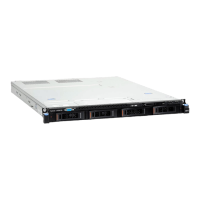
